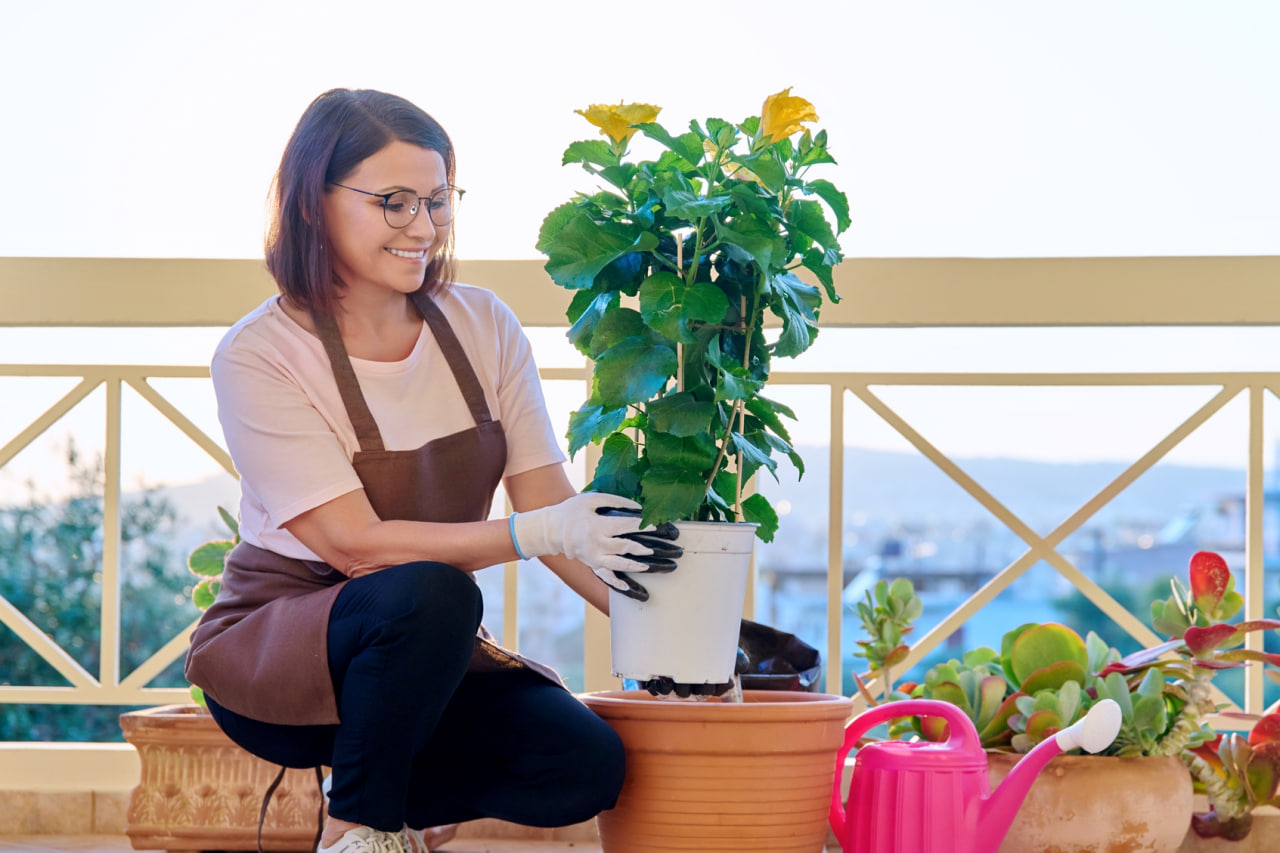Introduction:
Balcony gardening is becoming increasingly popular, especially for those living in urban areas with limited outdoor space. Fortunately, even a small balcony can become a thriving garden with the right selection of plants. Whether you’re looking to grow herbs, flowers, or vegetables, there are a variety of plants that thrive in small, containerized environments. In this blog, we’ll explore the top five plants that are perfect for balcony gardens. These plants not only bring beauty and freshness to your balcony, but they’re also easy to maintain and suitable for a variety of conditions.
1. Herbs – Basil, Mint, and Thyme
Why They’re Perfect for Balconies:
Herbs are ideal for small spaces like balconies because they grow well in containers and require minimal space. They’re also extremely versatile, as you can use them in cooking, teas, and even as natural remedies. Herbs like basil, mint, and thyme are particularly well-suited for balconies because they thrive in the sun and can be grown in compact pots or hanging planters.
Planting Tips:
- Choose pots or containers with good drainage to avoid root rot.
- Use well-draining soil and make sure your herbs get at least 4–6 hours of sunlight daily.
- Water regularly but let the soil dry out slightly between waterings.
- Trim the herbs often to encourage fresh growth.
What to Grow:
- Basil: Great for sunny spots, basil thrives in warm weather and is perfect for Mediterranean-inspired dishes.
- Mint: Mint is hardy and grows well in partial shade, though it can become invasive. It’s best grown in a container to prevent it from taking over your garden.
- Thyme: A low-maintenance herb that enjoys the sun, thyme is ideal for balconies with limited space. Its small, fragrant leaves add flavor to many dishes.
2. Succulents – Aloe Vera, Echeveria, and Jade Plant
Why They’re Perfect for Balconies:
Succulents are hardy plants that require minimal care, making them a great choice for those new to gardening or anyone looking for a low-maintenance plant. Their ability to store water in their leaves makes them drought-resistant, which is particularly useful for balconies exposed to hot weather or for those who may forget to water regularly. Succulents like Aloe Vera, Echeveria, and Jade Plant are not only beautiful but also thrive in containers or hanging planters.
Planting Tips:
- Use a well-draining cactus or succulent soil mix to ensure that water doesn’t linger around the roots.
- Choose containers with drainage holes to prevent root rot.
- Succulents need full sun to thrive, so place them in a sunny spot on your balcony.
- Water sparingly—only when the soil is completely dry to the touch.
What to Grow:
- Aloe Vera: A medicinal succulent with thick, gel-filled leaves that can soothe burns and skin irritations. Aloe thrives in direct sunlight and requires minimal care.
- Echeveria: Known for its rosette-shaped leaves and colorful blooms, Echeveria is a decorative succulent that grows well in containers and hanging baskets.
- Jade Plant: With its thick, glossy leaves, the Jade Plant is a popular succulent for balconies. It’s known for bringing good luck and thrives in bright sunlight.
3. Petunias
Why They’re Perfect for Balconies:
Petunias are one of the most popular flowering plants for balcony gardens. They’re colorful, easy to care for, and grow well in hanging baskets, window boxes, or regular pots. Petunias offer an explosion of vibrant colors, from bright pinks to deep purples and whites, which can transform a balcony into a lively and welcoming space.
Planting Tips:
- Petunias thrive in full sun, so ensure they receive at least 6 hours of sunlight per day.
- Use well-draining soil, as petunias don’t like to sit in water.
- Keep them well-watered, but make sure the soil doesn’t become soggy.
- Deadhead flowers regularly to encourage more blooms throughout the season.
What to Grow:
- Trailing Petunias: These are perfect for hanging baskets or containers, as they spill over the sides, creating a beautiful cascading effect.
- Wave Petunias: Known for their low-maintenance nature and spreading habit, these petunias are great for filling large pots or containers.
- Grandiflora Petunias: These varieties feature large flowers and vibrant colors. They’re ideal for adding bold visual appeal to your balcony garden.
4. Tomatoes (Cherry and Small Varieties)
Why They’re Perfect for Balconies:
If you love fresh, homegrown food, tomatoes are a fantastic choice for balcony gardening. Many compact varieties, such as cherry tomatoes, are specifically bred to grow in containers and small spaces. These tomatoes are perfect for balconies that get full sun, as they require at least 6–8 hours of sunlight each day to produce a bountiful harvest.
Planting Tips:
- Choose a large, deep container to give your tomato plant enough space to grow.
- Use a potting mix rich in nutrients and make sure it drains well.
- Water regularly, especially during hot weather, but ensure the soil is not waterlogged.
- Provide a support structure like a trellis or tomato cage to keep your plants upright and prevent the fruit from touching the ground.
What to Grow:
- Cherry Tomatoes: Compact, sweet, and small, cherry tomatoes grow well in containers and are perfect for eating fresh or adding to salads.
- Tiny Tim Tomatoes: A dwarf variety, Tiny Tim tomatoes are perfect for very small balconies or container gardens. They produce small, flavorful fruit that’s ideal for small spaces.
5. Lavender
Why They’re Perfect for Balconies:
Lavender is a fragrant, low-maintenance plant that is perfect for balcony gardens. Not only does it have a beautiful scent, but it also attracts bees, butterflies, and other beneficial insects to your garden. Lavender thrives in containers and grows well in sunny spots, making it ideal for balconies with plenty of direct sunlight.
Planting Tips:
- Lavender requires well-drained, slightly alkaline soil. You can mix sand into your potting soil to improve drainage.
- Place lavender in a spot that receives at least 6–8 hours of sunlight each day.
- Water moderately, ensuring the soil is dry before watering again. Lavender prefers drier conditions, so avoid overwatering.
- Prune your lavender plant after blooming to maintain its shape and encourage future growth.
What to Grow:
- English Lavender: Known for its sweet scent and vibrant purple flowers, this variety is the most commonly grown lavender and works well in small containers.
- French Lavender: With its unique, spiky blooms and hardy nature, French lavender is another excellent option for balcony gardens.
- Lavandin Lavender: A hybrid variety, Lavandin is known for its large blooms and strong fragrance, making it ideal for adding both beauty and fragrance to your balcony.

